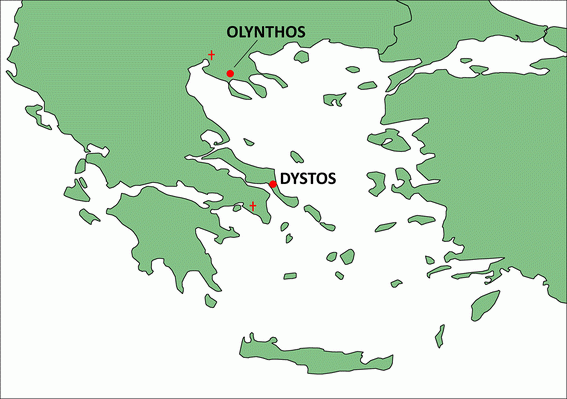Modelling the Freshwater Supply of Cisterns in Ancient Greece
Published on by Patrik Klingborg, Fil.dr. på Uppsala universitet in Academic
In this paper, we model the function of rainwater harvesting cisterns in ancient Greece.
The model calculates on a monthly basis: (1) the collected and stored volume of water; (2) the amount of water extracted for individual use; and (3) the potential accumulated surplus available by the end of a month.
The potential of the model is explored through two case studies based on material from Olynthos in Thessaly and Dystos on ancient Euboia by running 26 consecutive annual cycles utilizing modern precipitation data from meteorological stations as a proxy for ancient precipitation and precipitation variability.
Our results show that cisterns can provide ample amounts of freshwater to households and function as buffers for water stress in shorter (monthly), and longer terms (seasonally, yearly and between years). The two cisterns in this paper yield between 10.7 and 86.6 m3 per annum with a strong variability in collected water volumes within and between years.
Yet, this variability is, largely predictable and thus the use of cisterns in ancient Greece should be viewed in the light of predictable variability that required active participation from members of the household to be efficient.
Keywords
Rain water harvesting, Cisterns, Modelling, Sustainability, Predictable variability, Ancient Greece

Fig. 1 - Map showing the location of the cisterns used as case studies in this paper (circles) and the location of the meteorological stations (crosses) from which precipitation data was used in our model
Read full study: SpringerLink
Media
Taxonomy
- Modelling
- Water Cycle
- Freshwater
- Sustainable Water Resource Management
- Access
- Water Supply
- Water Management